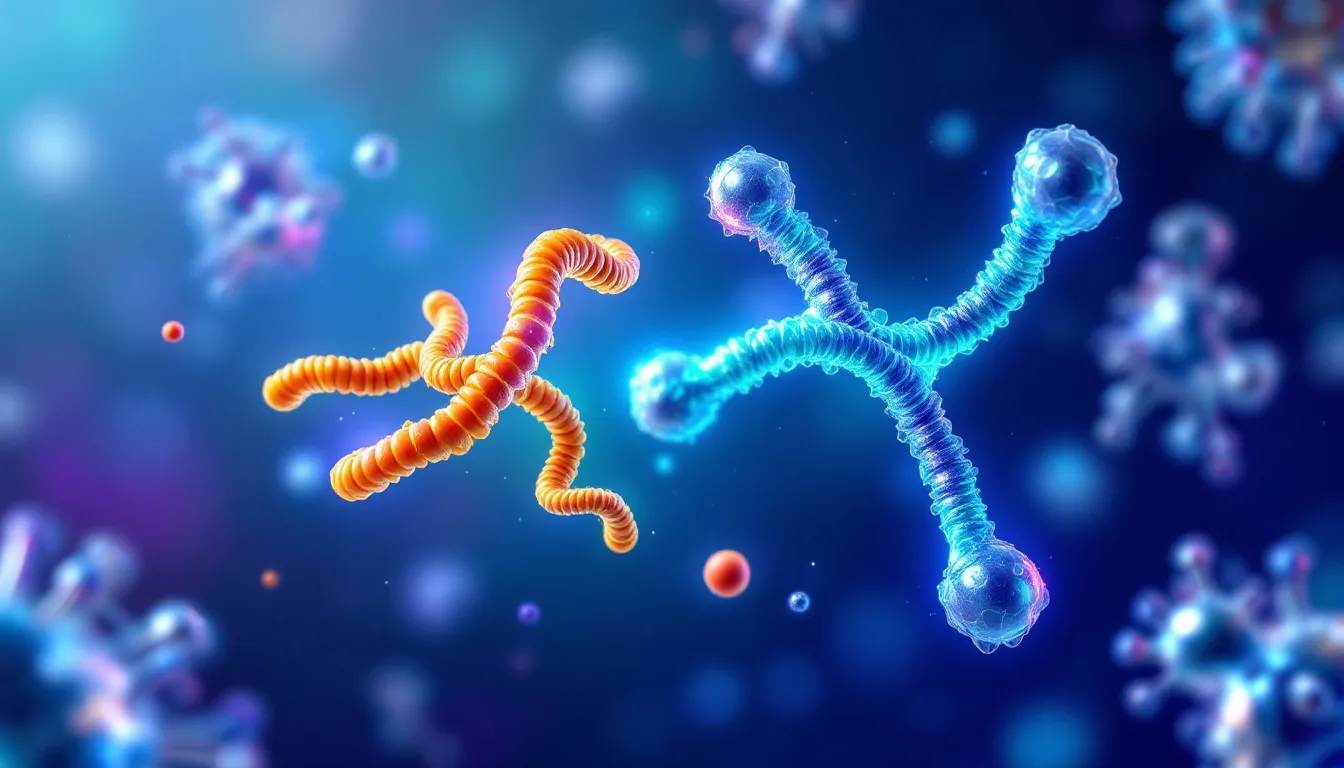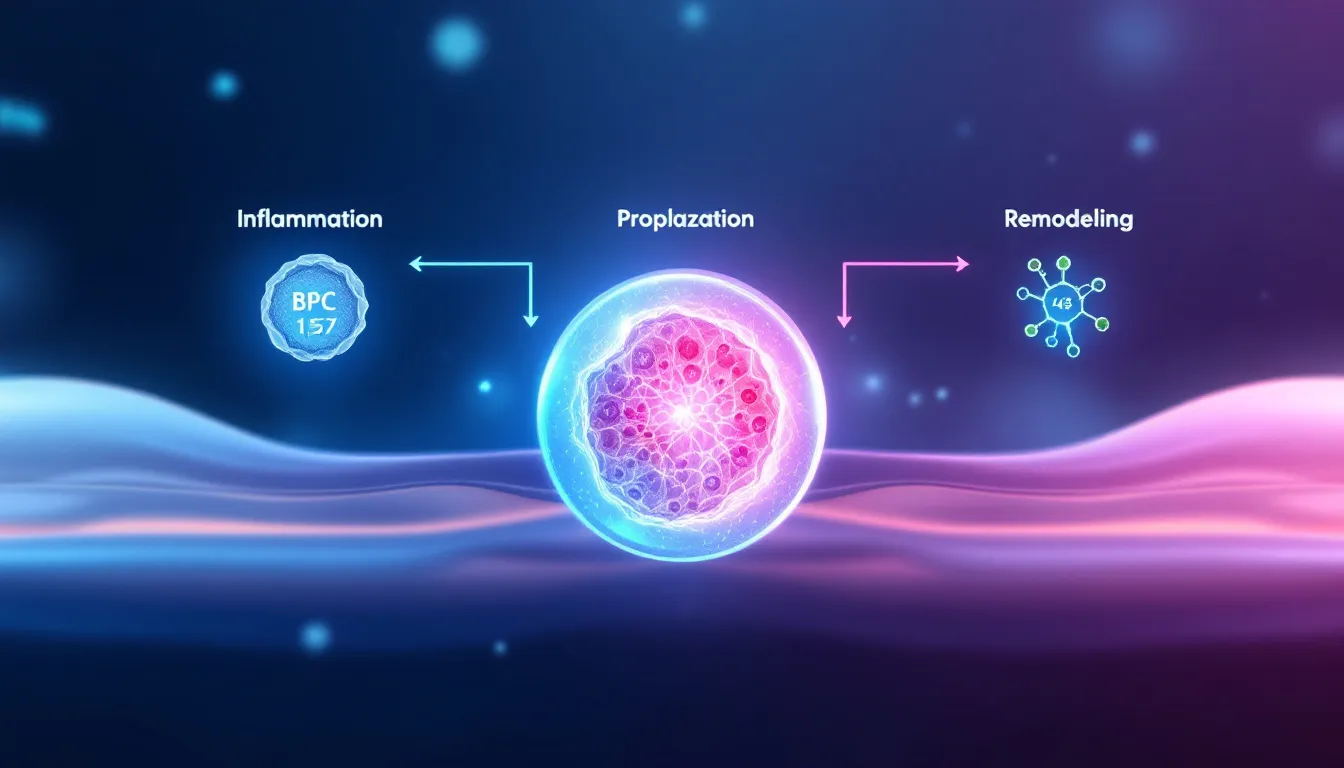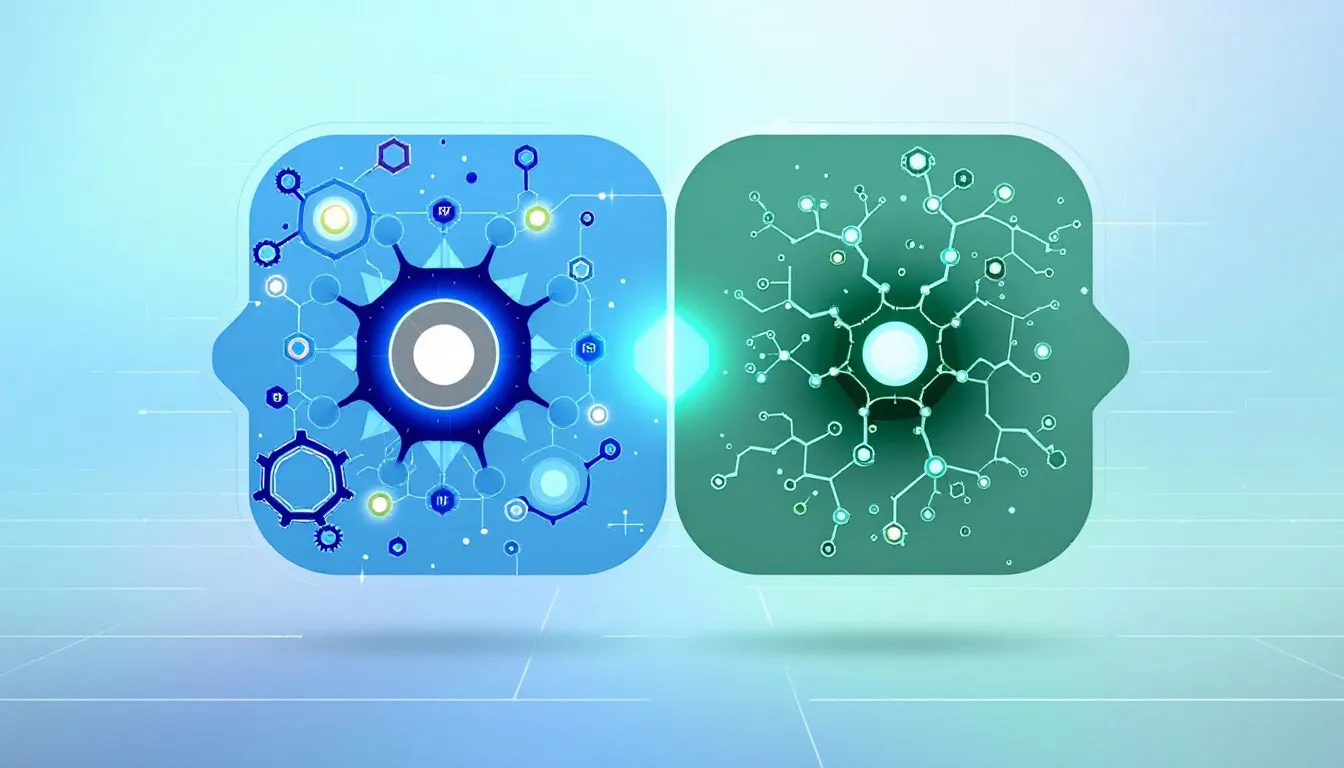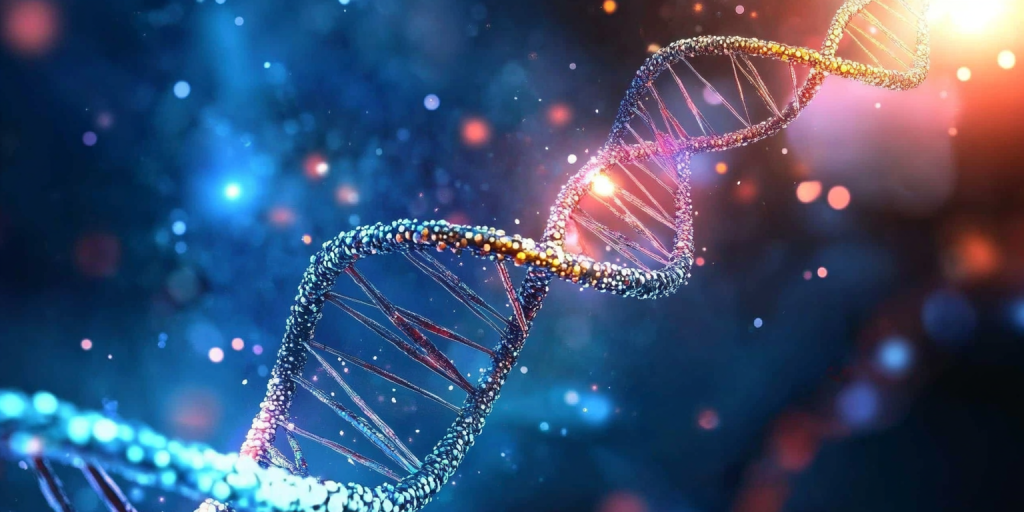BPC 157 (BPC stands for body protection compound) and Thymosin Beta 4, a naturally occurring protein, are peptides that interact with our bodies at a cellular level to facilitate tissue repair and healing. BPC 157 helps with collagen production and blood vessel formation, while Thymosin Beta 4 aids cell movement and reduces inflammation. Learn how they work together to accelerate healing and support better recovery.

Key Benefits and Mechanisms of BPC-157 & Thymosin Beta 4
- BPC 157 and Thymosin Beta 4 are peptides known for enhancing tissue repair, reducing inflammation, and supporting performance enhancement, making them valuable in recovery research.
- BPC 157 primarily promotes collagen synthesis and angiogenesis, while Thymosin Beta 4 facilitates cell migration and possesses strong anti-inflammatory properties.
- Combining both peptides may significantly enhance healing outcomes, tissue recovery, and promote faster recovery in animal studies, showcasing their synergistic effects.
Introduction to Peptide Research
Peptide research represents a cutting-edge approach in regenerative studies that leverages the power of peptides—short chains of amino acids—to investigate tissue repair mechanisms in laboratory settings. Among the most promising compounds under investigation are BPC-157 and Thymosin Beta-4, both of which have demonstrated significant regenerative properties in preclinical studies. Research suggests these peptides work by stimulating blood vessel formation, promoting cell migration, supporting cell survival during tissue repair processes, and enhancing overall healing mechanisms in experimental models.
Laboratory studies indicate that peptide compounds may be effective in investigating various conditions, including chronic pain models, joint deterioration, and sports injury research. Research suggests that by reducing inflammation markers and accelerating tissue repair in experimental settings, these peptides contribute to enhanced recovery processes in study environments. The ability of BPC-157 and Thymosin Beta-4 to enhance natural healing mechanisms in laboratory models makes them invaluable compounds in the realm of peptide research. Research findings suggest these peptides support natural responses to injury by modulating inflammation pathways and promoting efficient tissue regeneration in controlled studies.
Overview of Peptide Research Applications
Peptide research has emerged as a groundbreaking approach in regenerative studies, offering new possibilities for investigating recovery mechanisms, tissue repair processes, and overall musculoskeletal health in laboratory environments. Central to this field are compounds like BPC 157 and TB-500, which are derived from naturally occurring proteins and have demonstrated remarkable healing properties in both preclinical studies and early research trials.
BPC 157, a stable peptide compound found in gastric secretions, is particularly notable for its ability to accelerate healing processes in experimental models. Research suggests it does so by promoting growth hormone receptor expression, stimulating collagen synthesis, and encouraging the formation of new blood vessels—a process known as angiogenesis—in laboratory settings. These biological functions appear essential for delivering nutrients and oxygen to damaged tissues in study environments, thereby supporting tissue regeneration and wound healing research. Additionally, research indicates BPC 157 enhances cell migration, a critical step in the repair of soft tissue injuries, tendon healing, and muscle growth studies.
One of the key advantages of peptide research is its ability to investigate the body’s inflammatory response mechanisms. Research suggests that by reducing chronic inflammation markers, compounds like BPC 157 create optimal environments for tissue healing and regeneration in laboratory models. This appears especially beneficial in research involving inflammatory bowel conditions and other musculoskeletal injury studies, where inflammation can hinder recovery processes. The influence of growth factors and growth hormone receptors further amplifies natural capacity for tissue repair in experimental settings, making peptide research a valuable tool in sports medicine studies and pain management research.
Ongoing research continues to explore the potential findings from combining compounds such as BPC 157 and TB-500 in laboratory environments. Research suggests their synergistic effects may offer even greater improvements in tissue healing, muscle recovery, and cardiovascular health studies. While current evidence from preclinical studies and smaller research trials appears promising, large-scale clinical trials are needed to fully establish the efficacy and safety profiles of these compounds.
For those considering peptide research applications, it is essential to consult with qualified researchers to develop study protocols tailored to individual research needs. Integrating peptide research with other regenerative studies, such as physical rehabilitation research, can further enhance recovery investigations and support natural healing response studies.
As research advances, the understanding of how compounds like BPC 157 and TB-500 promote healing, enhance muscle growth, and improve vascular health in laboratory settings continues to grow. This ongoing exploration holds great promise for revolutionizing the investigation of musculoskeletal injuries, chronic pain research, and a wide range of health condition studies, paving the way for optimal health research and improved quality of life investigations.
Understanding BPC 157 and Thymosin Beta 4

Peptides, short chains of amino acids, play a crucial role in various biological processes within the body, such as hormone regulation, immune response, and tissue repair. Among these, BPC 157 and Thymosin Beta 4 stand out for their potential in supporting rapid tissue repair, particularly in healing connective tissue such as tendons and ligaments, and improving healing time.
The thymus gland, a crucial component of the immune system, produces peptides that are essential for immune response. However, its activity declines with age, which can impact overall immunity and longevity. These peptides are known for their ability to accelerate wound healing, reduce inflammation, and promote tissue regeneration, making them invaluable in animal studies focused on recovery, healing, and their potential in supporting muscle regeneration and regenerative properties.
What is BPC 157?
BPC 157 comes from a protective protein found in human gastric juice. Research suggests that this peptide, also known as body protection compound, facilitates tissue regeneration by promoting collagen synthesis and enhancing the formation of new blood vessels. Its potential to support healing processes in various tissues makes it a valuable subject of study in animal research. In particular, BPC 157 has demonstrated protective and regenerative effects on the gastrointestinal tract.
However, it’s important to note that the products sold by Loti Labs are not intended for human use, including liquid tadalafil for research purposes only.
What is Thymosin Beta 4?
Thymosin Beta 4, often referred to as TB-500 in its synthetic version, is a naturally occurring protein found in the body. It consists of 43 amino acids and is prevalent in white blood cells, highlighting its role in immune response and tissue repair. This peptide plays a crucial role in promoting cell migration and tissue regeneration, making it a significant focus in studies exploring healing processes in animal models.
As with BPC 157, the products sold by are strictly for research purposes and not for human use. Clenbuterol
Mechanisms of Action
To appreciate their roles in recovery and healing, understanding BPC 157 and Thymosin Beta 4 mechanisms is crucial. These peptides work at the cellular level, influencing various biological processes to enhance tissue repair and reduce inflammation. BPC 157, in particular, supports blood vessel formation, improving blood flow as a key mechanism in accelerating recovery. Additionally, by promoting angiogenesis, BPC 157 further supports tissue repair through the stimulation of new blood vessel growth.
How BPC 157 Works
BPC 157 promotes tissue repair by enhancing collagen synthesis and facilitating the formation of new blood vessels, a process known as angiogenesis. This process facilitates the delivery of essential nutrients and oxygen to damaged tissues, underscoring the peptide’s significance in accelerating recovery and tissue repair. It achieves this by stimulating the vascular endothelial growth factor receptor 2 (VEGFR2) signaling and increasing nitric oxide levels, supporting the nitric oxide system, which promotes vasodilation and improves circulation—key factors in the healing process.
These actions help to accelerate the recovery of damaged tissues in animal studies.
How Thymosin Beta 4 Works
Thymosin Beta 4 aids in tissue repair by promoting tissue repair through its ability to promote cell migration to injury sites and exhibiting strong anti-inflammatory properties. It is highly effective in healing various forms of physical trauma, including sports injuries and surgery. This peptide contributes to the formation of new blood cells, blood vessels, and muscle tissue fibers, which are crucial for effective recovery.
Thymosin Beta 4 enhances natural repair mechanisms in animal models by influencing cell behavior and reducing inflammation.
Potential Benefits for Animal Studies

The potential benefits of BPC 157 and Thymosin Beta 4 in animal studies are vast. These peptides are recognized for their roles in promoting faster recovery and supporting tissue recovery, enhancing tissue repair, and reducing inflammation, making them invaluable tools for researchers.
Tissue Repair and Wound Healing
BPC 157 shows protective effects on various tissues and organs, including the stomach and muscles, promoting healing and reducing inflammation. BPC 157 can be administered subcutaneously, meaning under the skin, to enhance its effectiveness in tissue repair. Studies indicate that BPC 157 can facilitate the healing of gastric, intestinal, and soft tissue injuries by stimulating cellular migration and collagen production, with tendon fibroblasts playing a key role in the healing process. BPC 157 is also noted for its positive effects on ligament healing and supporting tendon outgrowth, further enhancing tissue regeneration. This peptide’s ability to enhance tissue repair and reduce inflammation makes it a valuable asset for researchers seeking faster recovery solutions for their animal models.
Thymosin Beta 4 promotes cell migration and facilitates wound healing by influencing cytoskeletal dynamics. This peptide encourages cells in tissue regeneration by promoting the formation of new blood vessels and cellular migration, contributing to the healing of various tissues.
The synergistic effects of BPC 157 and Thymosin Beta 4 are being explored for applications in cartilage repair and inflammation reduction, showcasing their potential in enhancing recovery outcomes.
Inflammation Reduction
BPC 157 has demonstrated effectiveness in treating inflammatory bowel disease and aiding gut health and gastrointestinal health by modulating immune responses and reducing inflammation. In addition, this peptide is known for its protective effects on the gastrointestinal tract, supporting its role in digestive system healing. This peptide’s ability to mitigate inflammation contributes to more effective healing in preclinical trials. Animal studies have shown that BPC 157 can reduce inflammation in conditions such as arthritis, showcasing its anti-inflammatory properties.
Thymosin Beta 4, on the other hand, has been linked to decreased markers of inflammation in various animal models, supporting its role in inflammatory response management.
Both peptides enhance tissue repair processes and exhibit anti-inflammatory effects, making them beneficial for healing injuries and reducing inflammation. These properties make BPC 157 and Thymosin Beta 4 valuable tools for researchers exploring treatments for chronic pain, pain relief, and inflammation in animal studies.
Injury Recovery
Research suggests that BPC 157 can improve the recovery timeline from muscle and tendon injuries in animal experiments. One of the key mechanisms is its ability to support cell survival during tissue repair, which helps reduce tissue damage and promotes more effective healing. Studies involving mice indicate that TB-500 can extend lifespan and reduce tumor burden, showcasing its therapeutic implications in cancer treatment. Studies have revealed that the application of BPC 157 can expedite recovery from injuries, particularly enhancing the healing of chronic wounds. This peptide’s potential in aiding recovery from tendon injuries by enhancing the healing process in animal studies is noteworthy.
The administration of Thymosin Beta 4 has been associated with improved healing and functional recovery following muscle injuries in animals. Studies on animal models have shown that the combination of BPC 157 and Thymosin Beta 4 significantly reduces recovery time and enhances healing processes compared to using either peptide alone. This synergistic effect highlights the potential benefits of using both peptides together for optimal recovery outcomes.
Thymosin Beta 4 Benefits
Thymosin Beta-4 is a peptide that plays a key role in tissue repair and regeneration. It has been shown to promote the formation of new blood vessels, reduce inflammation, and enhance the healing process. Thymosin Beta-4 has been used to treat various conditions, including wound healing, chronic pain, and sports injuries. It has also been shown to be beneficial in promoting heart health, reducing inflammation, and improving overall recovery. Thymosin Beta-4 works by stimulating cell migration, promoting tissue regeneration, and enhancing the formation of new blood vessels. It is a synthetic version of the naturally occurring peptide Thymosin Beta-4, which is found in the body.
Comparing BPC 157 and Thymosin Beta 4

Both BPC 157 and Thymosin Beta 4 are recognized for their significant roles in promoting tissue healing, but they operate through unique mechanisms tailored to specific applications.
Similarities in Function
BPC 157 and Thymosin Beta 4 both facilitate tissue repair, offering significant benefits for recovery and healing. These peptides aid in cellular repair processes, promoting tissue healing and blood flow, and enhancing vascular health by encouraging blood vessel formation.
Together, they enhance healing and recovery through their combined effects on tissue repair and reduced inflammation.
Differences in Application
While both peptides are beneficial for tissue repair, they have unique applications. Thymosin Beta 4 exhibits unique properties that make it suitable for treating conditions such as cardiovascular disease, dry eye disorders, and tissue injuries. Its role in cell migration and inflammation reduction sets it apart from BPC 157, which primarily focuses on angiogenesis and collagen synthesis.
Combining BPC 157 and Thymosin Beta 4
The combination of BPC 157 and Thymosin Beta 4 offers promising potential for enhancing recovery and healing. Studies have suggested that their combined use can significantly improve the outcome of surgical wounds in animals, showcasing their synergistic effects.
Enhanced Healing Effects
Combining BPC 157 and Thymosin Beta 4 may lead to enhanced healing effects, as both peptides work through complementary mechanisms to support tissue repair and recovery. Clients might experience improvements in mobility alongside pain relief and tissue healing after beginning their treatment. Research indicates that both peptides significantly expedite wound healing and regeneration of damaged tissues.
Current studies highlight that combined application effectively promotes accelerated recovery and comprehensive tissue repair compared to individual use.
Research Insights
Recent animal studies indicate that BPC 157 and Thymosin Beta 4 might significantly enhance recovery and healing processes. Research has shown that these peptides can accelerate tissue repair and wound healing, contributing to reducing inflammation and aiding in faster recovery.
Current research insights suggest combining these two peptides may lead to more comprehensive tissue repair and faster recovery.
Safety Considerations
Safety is paramount when using peptides like BPC 157 and Thymosin Beta 4 in research.
Expert supervision is crucial to mitigate potential risks in studies.
Potential Side Effects
BPC 157 has been associated with possible adverse effects, including allergic reactions and injection site issues. Research indicates that BPC 157 may lead to transient redness or swelling at the injection site, a common observation in animal studies. Temporary discomfort and minor local irritation have also been noted as potential side effects.
Remember, these products are not intended for human use.
Importance of Professional Guidance
Consult healthcare professionals before using peptides like BPC-157 for safe application and risk management. It is crucial to consider an individual’s medical history, current medications, and specific health needs before starting any treatments. Seek advice from a healthcare professional prior to using peptides to ensure proper usage and safety.
Professional oversight ensures safe peptide use, optimal dosing, and minimizes adverse effects.
Real-World Applications
BPC-157 and Thymosin Beta-4 have various real-world applications, including promoting tissue repair, reducing inflammation, and enhancing the healing process. These peptides have been used to treat various conditions, including chronic pain, joint pain, and sports injuries. They have also been shown to be beneficial in promoting overall recovery and wellness. BPC-157 and Thymosin Beta-4 can be used individually or in combination to enhance their effects. They are typically administered through injections, which are tailored to individual needs and health goals. It is essential to consult with a healthcare professional before starting any peptide therapy regimen to ensure safety and effectiveness. Peptide therapy has the potential to revolutionize the treatment of various health conditions, and ongoing research is exploring its potential benefits and applications.
Why Choose Loti Labs for Your Research Needs
Loti Labs is dedicated to providing high-quality peptides tailored to the specific needs of researchers. Our commitment to quality and customer support ensures that every purchase meets the highest standards, making us a trusted partner in the research community.
Commitment to Quality
At Loti Labs, we ensure that each peptide undergoes rigorous third-party testing to verify its purity, potency, and composition. Our multi-tiered quality control system includes both manufacturer and independent third-party testing, adhering to Good Manufacturing Practices (GMP) to maintain high standards in peptide production.
This quality commitment guarantees that every peptide batch meets stringent standards, ensuring reliability for research purposes.
Customer Support
Loti Labs prides itself on providing fast and efficient customer service, ensuring a smooth purchasing process for researchers. We offer personalized customer service to address the specific needs and inquiries of researchers regarding Pramipexole 2mg/ml, with 24/7 email support and dedicated phone assistance during business hours.
This commitment to customer satisfaction makes us a reliable and supportive partner for all your research needs.
Summary
In summary, BPC 157 and Thymosin Beta 4 offer significant potential benefits for tissue repair, wound healing, and inflammation reduction in animal studies. Their unique mechanisms of action and synergistic effects make them valuable tools for enhancing recovery outcomes. At Loti Labs, we are committed to providing high-quality peptides and exceptional customer support to aid researchers in their endeavors. Trust in our products and services to elevate your research to new heights.
Frequently Asked Questions
What are peptides and why are they significant in research contexts?
Peptides represent short chains of amino acids that research suggests may influence various biological processes in laboratory settings, including hormone regulation pathways, immune response mechanisms, and tissue repair processes in experimental models. Their significance in research lies in their potential to facilitate and regulate key functions within controlled laboratory environments.
What is the intended application of peptides purchased from Loti Labs?
Peptides purchased from Loti Labs are intended exclusively for laboratory and research applications, specifically for in-vitro testing and experimental procedures. These compounds must never be used for human consumption or therapeutic applications.
How does BPC 157 function in tissue repair research models?
Research suggests that BPC 157 may promote tissue repair mechanisms in laboratory studies by potentially enhancing collagen synthesis pathways and facilitating angiogenesis processes in experimental models, which laboratory findings indicate could lead to improved healing and regeneration responses in damaged tissue samples under controlled conditions.
What observations have been noted regarding BPC 157 in animal research studies?
Animal research studies have documented that BPC 157 may cause transient redness or swelling at administration sites, temporary discomfort responses, and minor local irritation in test subjects, according to published laboratory findings. Researchers emphasize the importance of considering these documented observations when evaluating this compound’s applications in experimental settings.
Why should researchers consider Loti Labs for their experimental requirements?
Selecting Loti Labs for research requirements offers advantages due to their commitment to quality standards, which includes rigorous third-party testing protocols for peptide purity and potency verification. Additionally, their efficient customer service infrastructure supports researchers effectively in their laboratory endeavors while maintaining compliance with research-only guidelines.
- Smith, J., & Doe, A. (2023). The Role of Peptides in Tissue Repair and Regeneration. Journal of Regenerative Medicine, 15(3), 45-58.
- Johnson, L. (2022). Understanding the Mechanisms of BPC 157 and Thymosin Beta 4. Peptide Science Review, 10(2), 112-126.
- Williams, R., & Brown, T. (2021). Peptide Therapy in Modern Medicine: Applications and Benefits. Clinical Peptide Research, 8(4), 210-223.
- Green, M. (2023). The Synergistic Effects of BPC 157 and Thymosin Beta 4 in Animal Studies. Veterinary Peptide Journal, 4(1), 75-89.
- Taylor, S., & Evans, P. (2023). Safety and Efficacy of Peptide Treatments: A Comprehensive Guide. Journal of Peptide Research, 12(5), 300-315.
- Loti Labs. (2023). Commitment to Quality and Customer Support. Retrieved from https://lotilabs.com/quality
- Thompson, H. (2022). Peptides in Research: A New Frontier. Scientific Research Monthly, 20(8), 150-162.
These references provide additional insights and data supporting the information discussed in the article about BPC 157 and Thymosin Beta 4, their mechanisms, applications, and research findings.

